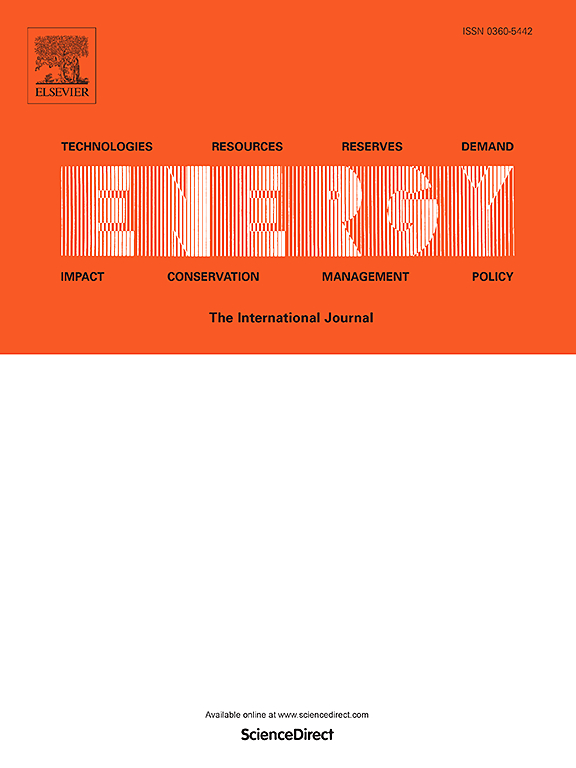Carbon capture through solar-driven CO2 gasification of oil palm empty fruit bunch to produce syngas and biochar
IF 9
1区 工程技术
Q1 ENERGY & FUELS
引用次数: 0
Abstract
Oil palm empty fruit bunch (OPEFB) is an abundant organic waste in Malaysia that is often disposed of through field burning. A previous study has shown that solar-driven steam gasification of OPEFB can produce hydrogen-rich syngas with an energy upgrade factor of 1.2 and a carbon conversion efficiency of 95.1 %. Beyond its potential as a biofuel, OPEFB can also act as a carbon sink, capturing photosynthetically stored carbon. This study explores the potential of amplifying OPEFB's negative carbon emissions through solar-driven gasification, using CO2 as the gasifying agent. In this work, a Central Composite Design (CCD) approach was employed to assess the influence of temperature (1100–1300 °C) and CO2/OPEFB molar ratio (1.6–3.0) on H2/CO molar ratio and energy upgrade factor, with a constant OPEFB flow rate of 1.8 g/min. The results demonstrated that at an energy upgrade factor of 1.4, 94.9 % of the total carbon was converted into syngas with a H2/CO molar ratio of 0.3. The maximum observed net carbon capture yield of 0.4 g C/g OPEFB was achieved at 1300 °C and a CO2/OPEFB molar ratio of 3.0. The remaining carbon (94.4–95.7 wt %) was converted into biochar with low heavy metal content, which has potential as a soil enhancer.

求助全文
约1分钟内获得全文
求助全文
来源期刊

Energy
工程技术-能源与燃料
CiteScore
15.30
自引率
14.40%
发文量
0
审稿时长
14.2 weeks
期刊介绍:
Energy is a multidisciplinary, international journal that publishes research and analysis in the field of energy engineering. Our aim is to become a leading peer-reviewed platform and a trusted source of information for energy-related topics.
The journal covers a range of areas including mechanical engineering, thermal sciences, and energy analysis. We are particularly interested in research on energy modelling, prediction, integrated energy systems, planning, and management.
Additionally, we welcome papers on energy conservation, efficiency, biomass and bioenergy, renewable energy, electricity supply and demand, energy storage, buildings, and economic and policy issues. These topics should align with our broader multidisciplinary focus.
 求助内容:
求助内容: 应助结果提醒方式:
应助结果提醒方式:


